Solution
-
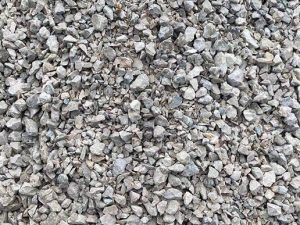
Ballast Crusher & Processing: Essential Equipment for Railway Infrastructure
Read moreBallast crushers and processing systems play a vital role in producing high-quality aggregates for railway construction and maintenance. This guide explores the machinery, workflows, and advantages of modern ballast processing solutions. 1. What Is Ballast Crusher? A ballast crusher is specialized equipment designed to break down large rocks or stones into uniformly sized gravel, meeting strict railway standards for track stability and drainage 312. Key types include: Jaw Crushers: Ideal for primary crushing, reducing large rocks to 40-200 mm fragments. Impact Crushers: Produce cubical-shaped aggregates for optimal compaction. Cone Crushers: Ensure precise secondary crushing for consistent particle sizes. 2. Ballast Processing Workflow Modern processing plants integrate multiple stages to achieve efficiency: Primary Crushing: Raw stones are fed into jaw crushers via vibrating feeders. Secondary Refinement: Impact or cone crushers further reduce fragments to 25-50 mm, the ideal size for railway ballast. Screening: Vibrating screens separate oversized or undersized particles, ensuring compliance with specifications. Cleaning: Advanced systems remove dust and impurities to enhance durability. 3. Key Advantages of Modern Systems Adjustable Blades & Automation: Some crushers feature rotatable blades and hydraulic adjustments to optimize output for varying rock hardness. Energy Efficiency: Advanced designs reduce power consumption by 20-30% compared to traditional models . Multi-Scenario Adaptability: Suitable for railways, roadbeds, and construction projects requiring high-strength aggregates . 4. Applications in Railway Maintenance Railway ballast must withstand heavy loads and environmental stress. Processed aggregates: Improve track alignment and reduce deformation. Enhance drainage to prevent waterlogging. Extend the lifespan of rail infrastructure through uniform compaction. Investing in advanced ballast…
-
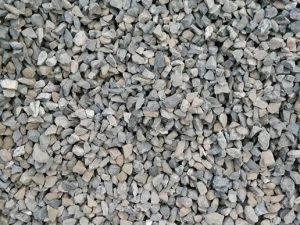
The Ultimate Guide to Aggregate Crusher & Processing
Read moreAggregate crushers and processing systems are indispensable in modern construction, mining, and infrastructure projects. These machines transform raw materials like limestone, granite, and quartz into high-quality aggregates for concrete, roads, and buildings. Here’s an in-depth look at their functionality, benefits, and applications. 1. Types of Aggregate Crushers Jaw Crushers: Ideal for primary crushing, these machines handle large rocks with high compression strength, commonly used in mining and quarrying. Cone Crushers: Perfect for secondary crushing, they produce uniformly shaped aggregates by compressing materials between a rotating mantle and concave. Impact Crushers: Suited for softer materials like limestone, they deliver high reduction ratios and cubic-shaped outputs, essential for construction-grade aggregates. Mobile Crushing Plants: Wheeled or tracked units offer flexibility for on-site processing, reducing transportation costs and enabling real-time adjustments. 2. Key Processing Stages Crushing: Raw materials are reduced to smaller sizes using primary and secondary crushers. Screening: Vibrating screens separate aggregates by size to meet project specifications. Washing: Removes impurities (e.g., dust, clay) to enhance material quality . Quality Control: Advanced technologies like real-time monitoring ensure consistency and compliance with standards . 3. Advantages of Modern Systems High Productivity: Equipment like the FAST-designed mobile crushers achieves 60–200 TPH outputs, ideal for large-scale projects . Durability: Components like high-manganese steel jaws and impact plates extend operational life, even in abrasive environments. Sustainability: Energy-efficient designs and closed-loop water systems minimize environmental impact. 4. Applications Across Industries Mining: Processes ores and minerals into usable materials. Construction: Produces base materials for roads, bridges, and buildings. Recycling: Converts demolition waste into reusable…
-

Optimizing Bauxite Crusher & Processing
Read moreBauxite, a primary source of aluminum, requires efficient crushing and processing to extract alumina. Optimizing this process involves selecting advanced equipment, refining workflows, and adopting innovative technologies. Below are key strategies to enhance efficiency and reduce operational costs. 1. Equipment Selection: High-Performance Crushers Modern bauxite processing relies on crushers tailored to material hardness and output requirements. Jaw crushers (e.g., PE100×60 or PEW150×125) are ideal for primary crushing due to their high reduction ratios and rugged construction 23. For secondary crushing, cone crushers (e.g., LIMING S-series) with hydraulic systems ensure consistent particle size and energy savings of 20–35% 18. Mobile crushers, such as wheeled-type units, offer flexibility for on-site processing, integrating crushing and screening into a single system. 2. Process Flow Optimization A well-designed workflow minimizes bottlenecks: Staged Crushing: Divide the process into coarse, medium, and fine crushing stages. For example, use a jaw crusher for initial size reduction (≤500mm), followed by a cone crusher for intermediate grinding (≤50mm), and a vertical shaft impactor for final shaping 38. Automated Sorting: Integrate sensors and AI-driven systems to separate impurities (e.g., silica) early, reducing downstream processing costs . Material Handling: Use conveyor belts with adjustable speeds to match crusher output, avoiding overloading or idle time. 3. Energy Efficiency & Sustainability Energy consumption accounts for 30–40% of processing costs. Optimize by: Adopting variable-frequency drives (VFDs) to adjust motor speeds based on real-time load demands 1. Recycling heat from crusher motors to pre-dry bauxite, cutting thermal energy use in calcination . Using closed-circuit systems to recirculate water in washing stages,…
-
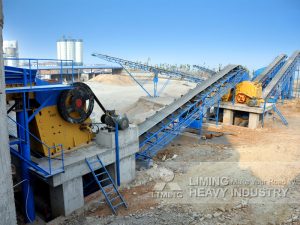
Stone Crusher & Processing: Efficient Solutions for Diverse Needs
Read moreComprehensive Stone Crusher Production Line A well – structured stone crusher production line consists of several essential components, including a Vibrating Feeder, jaw crusher, impact crusher, cone crusher, belt Conveyor, and Vibrating Screen. Each piece of equipment plays a crucial role in the overall process, ensuring efficient and high – quality stone crushing. Tailored Material Solutions We understand that different raw ores vary in size, and various application areas have distinct fineness requirements. That’s why we design customized and self – contained material solutions. By carefully analyzing your specific needs, we can save you from investing in unnecessary crushing and grinding equipment, optimizing your production cost and efficiency. Streamlined Production Processing Flow Primary Crushing: The stone is first fed into the jaw crusher through the vibrating feeder. The jaw crusher is known for its high – capacity primary crushing ability, breaking down large stones into smaller pieces. Secondary Crushing: After the initial crushing, the material is transferred to the secondary impact crusher. This stage further refines the crushed material, reducing it to a more manageable size for subsequent processing. Sieving: The crushed material is then conveyed to the vibrating screen by the belt conveyor. The vibrating screen is a vital component as it sieves the crushed stones into different grades according to their size. Product Sorting: Stones that meet the desired specifications are transported to the stockpile, ready for use. Meanwhile, those that don’t meet the requirements are sent back to the impact crusher for re – crushing, ensuring maximum utilization of the raw material.…
-
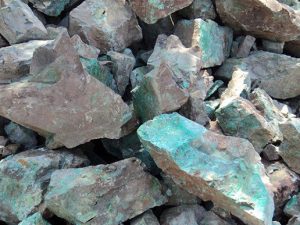
Copper Ore Crushing & Processing: A Step-by-Step Guide
Read moreUnlocking the Value of Copper Through Efficient Extraction Methods 1. Introduction to Copper Ore Processing Copper ore processing is a critical stage in metallurgy, transforming raw ore into usable copper concentrates. This process typically involves crushing, grinding, and beneficiation stages to maximize metal recovery while minimizing environmental impact . 2. Stage 1: Primary Crushing Key Equipment: Jaw Crushers, Gyratory Crushers Objective: Reduce ore size to 8–12 inches for easier handling. Process: Blasted copper ore is fed into primary crushers (e.g., jaw crushers) to achieve coarse fragmentation. Modern systems often use water-flush crushers to suppress dust and optimize particle size . 3. Stage 2: Secondary & Tertiary Crushing Key Equipment: Cone Crushers, Impact Crushers Fine Crushing: Secondary cone crushers further reduce ore to 1–3 inches. For high-efficiency leaching processes, tertiary crushing (e.g., hydraulic cone crushers) produces particles under 12 mm 35. Mobile Solutions: Compact mobile crushers are ideal for small-scale or remote mining operations, reducing infrastructure costs . 4. Grinding and Particle Liberation Key Equipment: Ball Mills, Rod Mills Process: Crushed ore is ground into fine powder (≤0.2 mm) using steel balls in rotating mills. This step ensures optimal exposure of copper minerals for subsequent extraction. Innovation: Advanced mills integrate automated sorting systems to separate waste rock early, improving energy efficiency . 5. Beneficiation Methods A. Flotation (Most Common) Process: Ore slurry is mixed with reagents; air bubbles attach to copper sulfides, forming a froth layer for collection. Recovery rates exceed 85% in modern plants . Keyword Focus: copper flotation process, sulfide ore processing. B.…
-
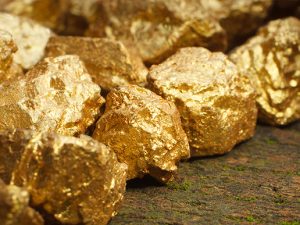
Ultimate Guide to Gold Ore Crushing & Processing: Efficient Techniques & Equipment
Read moreGold ore processing is a critical stage in transforming raw mineral deposits into market-ready precious metals. This guide explores advanced methodologies and machinery for optimizing gold recovery rates while maintaining cost-efficiency. 1. Ore Preparation & Crushing The first step involves primary crushing to reduce large ore chunks (≤500mm) into smaller fragments (50-100mm). Jaw crushers or gyratory crushers are commonly used here. For finer particle sizes, secondary crushing with cone crushers or hammer mills (e.g., granite stone hammer crushers . 2. Pre-Treatment for Refractory Ores Approximately 30% of gold ores are refractory due to encapsulation in sulfide minerals. Key pre-treatment methods include: Bio-Oxidation: Bacteria like Acidithiobacillus break down sulfides, improving cyanide accessibility (ideal for eco-friendly operations) . Pressure Oxidation: High-temperature autoclaves oxidize sulfides, achieving >95% gold recovery . Roasting: Traditional but effective for high-sulfur ores, though emissions require careful management . 3. Leaching & Recovery Cyanidation: The dominant method, where gold dissolves in a cyanide solution (pH 10–11). Activated carbon or zinc precipitation then extracts gold from the leachate. Thiosulfate or Chloride Leaching: Eco-friendly alternatives for cyanide-sensitive regions. Heap Leaching: Cost-effective for low-grade ores (<1g/t), using stacked ore piles irrigated with leaching agents . 4. Equipment Recommendations Invest in robust machinery to enhance operational efficiency: Hammer Crushers: Ideal for secondary crushing, handling granite and quartz-rich ores with capacities up to 500t/h . Cone Crushers: Ensure consistent particle size for grinding optimization. Ball Mills: Critical for achieving ultrafine grinding in refractory ore processing. Optimizing gold ore processing requires tailored approaches based on ore type (e.g., quartz vein,…
-
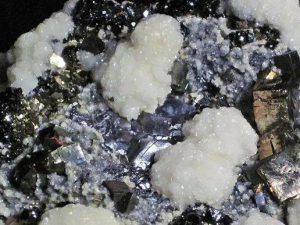
Core technology breakthrough in lead-zinc ore crushing and processing
Read moreAs an important nonferrous metal resource, the crushing and processing technology of lead-zinc ore directly affects the efficiency and economic value of mineral processing. In view of the large hardness difference of lead-zinc ore (Praeter hardness 5-7) and the complex associated minerals, the modular crushing system innovatively developed by Liming Heavy Industry can accurately match the needs of multiple mineral species such as sulfide ore, oxide ore and carbon-containing ore. Analysis of three-stage one closed-circuit crushing process 1. Coarse crushing stage The PEW European version jaw crusher is used to process ≤1200mm raw ore. The unique V-shaped crushing chamber design increases the production capacity by 30%. With the hydraulic overload protection system, it can effectively deal with the impact of composite ores containing precious metals such as gold and silver by 25. 2. Medium and fine crushing optimization HPT multi-cylinder hydraulic cone crusher realizes secondary crushing of lead-zinc ore, and controls the material particle size to ≤50mm through the principle of laminated crushing. The intelligent spindle speed adjustment function (0-220rpm) can adapt to the hardness fluctuation of lead-zinc sulfide ore and oxide ore by 35. 3. Closed-circuit screening system YKN series heavy-duty vibrating screens are equipped with dual motor excitation technology, with a screening efficiency of 92%. The anti-blocking screen developed specifically for muddy lead-zinc mines reduces the return rate by 20%. Technical advantages of Liming Heavy Industry Equipment CS550 cone crusher: equipped with an automatic cavity cleaning system, it can still maintain a stable production capacity of 570-750t/h when processing arsenic-containing copper-iron ores MTW215…
-
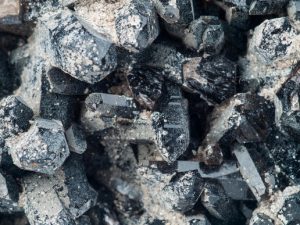
Magnetite Ore Crushing & Processing: A Comprehensive Guide
Read moreMagnetite ore, a key iron-bearing mineral, requires specialized crushing and processing to maximize industrial value. Here’s an optimized workflow to ensure efficiency and quality: 1. Crushing Stage Primary Crushing: Large magnetite ore blocks (≤1,200mm) are reduced to 200-300mm using jaw crushers or gyratory crushers. This step ensures uniform particle size for downstream processing. Secondary Crushing: Cone crushers further break down ore to 50-100mm, enhancing liberation of magnetite from gangue minerals. 2. Grinding & Magnetic Separation Ball Milling: Ore is ground to 0.074-0.4mm to fully liberate magnetite particles. Magnetic Separation: High-intensity magnetic separators extract magnetite from non-magnetic impurities, achieving >95% recovery rates. 3. Dewatering & Tailings Management Thickening & Filtration: Concentrates are dewatered via thickeners and vacuum filters to reduce moisture content (<10%). Eco-Friendly Tailings: Dry stacking technology minimizes environmental impact. Optimization Tips for Higher Efficiency Energy-Saving Equipment: Adopt HPGR (High-Pressure Grinding Rolls) to reduce power consumption by 20-30%2. Automation Systems: Real-time monitoring ensures stable processing parameters and minimizes downtime. By integrating advanced equipment and eco-conscious practices, magnetite ore processing can achieve both economic and environmental sustainability. For tailored solutions, consult our professional mineral processing engineers.
-
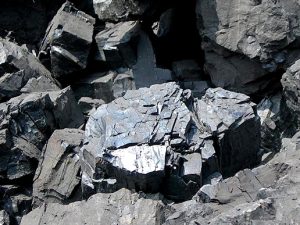
Silver Ore Crushing and Beneficiation: Enhancing Efficiency and Sustainability
Read moreSilver, a precious metal with diverse applications ranging from jewelry to electronics and medical uses, is extracted from silver ore through a series of meticulously designed processes. The journey from raw ore to refined silver involves crucial steps such as crushing and beneficiation. Understanding these processes not only sheds light on the complexities behind silver production but also highlights the importance of efficiency and sustainability in modern mining practices. Crushing Silver Ore: The First Step Towards Refinement The process begins with the crushing of silver-bearing ores, which are typically mined from underground or open-pit mines. The goal of crushing is to reduce the size of the ore pieces into smaller fragments that can be efficiently processed further. This step is essential for increasing the surface area available for subsequent beneficiation processes, thereby enhancing overall recovery rates. Commonly used equipment includes jaw crushers for initial breaking and cone crushers or impact crushers for finer reduction. Proper crushing ensures that the ore particles reach an optimal size distribution, which is critical for maximizing the effectiveness of downstream operations. Beneficiation of Silver Ore: Unlocking Value Once the ore has been crushed, the next phase involves beneficiation, where valuable minerals are separated from waste materials. Beneficiation techniques vary depending on the characteristics of the ore and may include gravity separation, flotation, and cyanidation. Flotation, one of the most prevalent methods, utilizes chemical reagents to selectively attach air bubbles to mineral particles, allowing them to float to the surface for collection. Cyanidation, although effective, requires careful management due to environmental…
-

Iron Ore Crushing & Processing: Efficient Crushing Equipment and Process Optimization
Read moreIn the field of iron ore mining and processing, the selection of crushing equipment and process design directly affect production efficiency and operating costs. 1. Equipment selection: matching ore characteristics with production needs Jaw crusher As the main primary crushing equipment, jaw crusher is suitable for the coarse crushing stage of high-hardness iron ore (such as magnetite and hematite). It has a simple structure, low maintenance cost, and a crushing ratio of 4-62. Cone crusher For the medium and fine crushing stage, the hydraulic cone crusher can handle iron ore with a compressive strength of ≤350MPa and achieve uniform particle size output with automatic overload protection and high energy efficiency. Mobile crushing station For example, 100t mobile crushing equipment integrates feeding, crushing and screening functions, which is suitable for dispersed mining sites or temporary mining scenarios, significantly reducing transportation costs. 2. Key points of process optimization Multi-stage crushing and closed-loop circulation The three-stage crushing system of “coarse crushing-medium crushing-fine crushing” is adopted, and the closed-loop circulation is formed by combining the screening equipment, which can control the iron ore particle size to ≤12mm and improve the grinding efficiency. Application of pre-selection technology Pre-dispensing tailings by X-ray sorting or magnetic separation can reduce the amount of ore entering the crusher and reduce equipment wear. Actual cases have proved that the energy consumption of crushing after pre-selection has dropped by 18%. Automated control system Integrated PLC and sensors to monitor parameters such as crushing chamber pressure and motor load in real time to achieve dynamic matching of…
